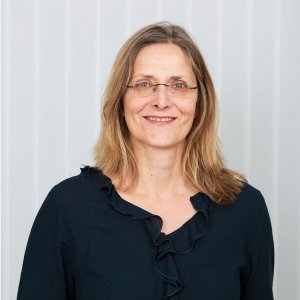Turning offices into laboratories

Something remarkable has happened in Oslo Cancer Cluster Incubator: office spaces have transformed into laboratories.
When Janne Nestvold, Chief Operating Officer of Oslo Cancer Cluster Incubator, noticed the empty offices and meeting rooms in the beginning of the corona lockdown, she saw an opportunity. Why not turn these spare rooms into much-needed laboratory space?
Walls had to be moved, a separate ventilation system had to be installed, and new water pipes had to be fitted. Expensive instruments were ordered and work benches with hoods were mounted for the cell laboratory. All rooms needed to be dimensioned correctly down to the last millimetre for everything to fit precisely.
Shortage of laboratories
Why did Nestvold go to all this trouble? The answer is simple: there is a lack of laboratory and test capacity in Norway for new health companies.
“Emerging companies in cancer often don’t have the resources to build their own advanced laboratories and buy all the expensive equipment themselves. The companies turn to us instead for our shared public-private laboratory facilities, which have become very important for them to succeed.”
Janne Nestvold
An urgent need
The demand for test facilities can be seen all over Norway. One example is Vaccibody, a Norwegian biopharmaceutical company developing novel vaccines and immunotherapies against cancer. As the company has grown recently, they needed to expand beyond the two labs they have in Oslo Science Park.
This spring, the Research Oncology Team at Vaccibody started using the labs at OCC Incubator. They are currently performing pre-clinical vaccination studies at the Radium Hospital, Oslo University Hospital, a Comprehensive Cancer Centre, which is located next to OCC Incubator.
“It is practical for us to have a laboratory located close to the facility where we perform our in vivo studies. Being a member of OCC Incubator is beneficial as we for instance get access to equipment that we may not use often enough to purchase on our own.” Audun Bersaas, PhD and Senior Scientist at Vaccibody.

The Research Oncology team at Vaccibody are developing novel vaccines and immunotherapies against cancer. Photo: Oslo Cancer Cluster
Breaking down barriers
The laboratories are shared between academic researchers from the Cell Therapy Unit at Oslo University Hospital and researchers from Norwegian companies, including Vaccibody, ThermoFisher, Zelluna Immunotherapy, Ultimovacs, and more.
“Research environments can be very competitive. In Oslo Cancer Cluster Incubator, we are building a collaborative atmosphere, based on mutual respect and sharing principles. This is important to help new companies reach their milestones.” Janne Nestvold

The laboratories will be shared between different companies and researchers from Oslo University Hospital’s Cell Therapy Unit. Photo: Oslo Cancer Cluster
The vision for a healthy future
Oslo Cancer Cluster Incubator supports more collaboration between researchers, industry, hospital staff and innovation ecosystems, so treatments can be developed and reach patients faster.
“To meet increasing pressure on the health services in the future, we need to invest in developing new technologies, diagnostics and treatments here in Norway,” said Ketil Widerberg, CEO, Oslo Cancer Cluster Incubator.
“Norway has world-class research environments in medicine, it is time to turn the research into products that help people and companies that create jobs, export opportunities and added value for society.” Ketil Widerberg
However, developing novel solutions in health come with high requirements. There is a need to test carefully to ensure it is safe and the innovations have a lengthy development time. This means that companies need access to more test facilities to bring innovative solutions to market.
Together with the other Norwegian health clusters, Norway Health Tech and Norwegian Smart Care Cluster, Oslo Cancer Cluster Incubator wants to set up more laboratories and test facilities in Norway.
In Oslo, there is already a lot happening. The Radium Hospital is building a completely new clinic and proton building, while Oslo Cancer Cluster Innovation Park will expand in two building stages over the next few years.
- Hear more about the plans for building the health industry in Norway in this webinar (in Norwegian) from 21 May 2021.







